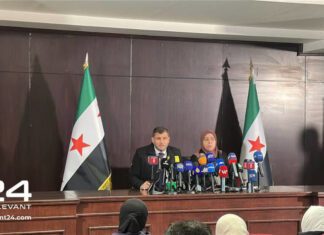
Residents in southern Syria are bracing for the possibility of a new war after Israeli troops advanced into Syrian territory. Civilians in the area are voicing fears that their villages may be drawn into an escalating conflict, potentially leading to further displacement and violence.
For over a decade, the people of Quneitra, a province bordering the Israeli-occupied Golan Heights, have endured waves of violence, displacement, and uncertainty. Now, with Israeli military activity increasing in response to hostilities with Hezbollah in Lebanon, many in the region fear that Syria might become the next battleground.
According to local accounts, Israeli forces have been bulldozing agricultural land as part of a controversial project to build a road, known as “Sufa 53,” extending into Syrian territory. In recent weeks, signs of Israeli activity along the border have raised alarms among the local population. According to reports from the region, Israeli forces have begun paving a new road, complete with trenches and observation posts, deep inside Syrian territory.
The potential for further Israeli incursions has left people in the region weighing difficult decisions about whether to stay or leave. “I would rather die in my home than face the bitterness of displacement again,” said Abu Muhammad, whose family has already been displaced multiple times during the Syrian Revolution. “But if the war comes here, we have no choice.”
Israeli military activity in the Golan Heights appears to be part of a broader strategy to create a security buffer on its northern borders, particularly in response to growing Iranian influence in Syria. Israel has long been concerned about the presence of Iranian forces and Hezbollah fighters in southern Syria, viewing them as a direct threat to its security.
However, the expansion of Israeli military operations has drawn international warnings. Kremlin spokesperson Dmitry Peskov cautioned against the potential for “catastrophic consequences” should the conflict further expand into Syria.
“Unfortunately, the scope of hostilities is actually expanding. We see that now a Lebanese front has been added. This leads to the destruction of civilian infrastructure, displacing tens and hundreds of thousands of people,” Peskov said. He added that Moscow refuses to consider any further expansion of military operations, noting that such developments would be disastrous for the region.
According to analysts, Israel’s moves in the region are aimed at preventing the establishment of a “Hezbollah 2” in Syria, mirroring the militant group’s stronghold in Lebanon. Brig. Gen. Asaad Al-Zoubi, a military analyst, noted that the decline of Russian military involvement in the region has created an opportunity for Israel to push further into Syrian territory without facing major resistance.
Former Israeli Defense Minister Avigdor Lieberman recently called for a preemptive strike against Syria, suggesting that Israel might occupy the entirety of Mount Hermon to prevent future threats. “The Assad regime must understand that allowing Syria to be used as a base for attacks against Israel will come at a high price,” Lieberman said.
The situation in southern Syria has been fragile for years, marked by sporadic violence and ongoing economic hardship. However, the latest developments are raising concerns that a new phase of conflict may be imminent. Israeli airstrikes on Iranian and Hezbollah targets inside Syria have been frequent since the start of the Syrian revolution, but the recent ground incursion is seen as a significant escalation.
Only time can determine whether the current tensions will spiral into a wider conflict, potentially drawing Syria into the broader regional escalation between Israel and Hezbollah. For the people of Quneitra, however, the fear of displacement and violence remains all too familiar.








